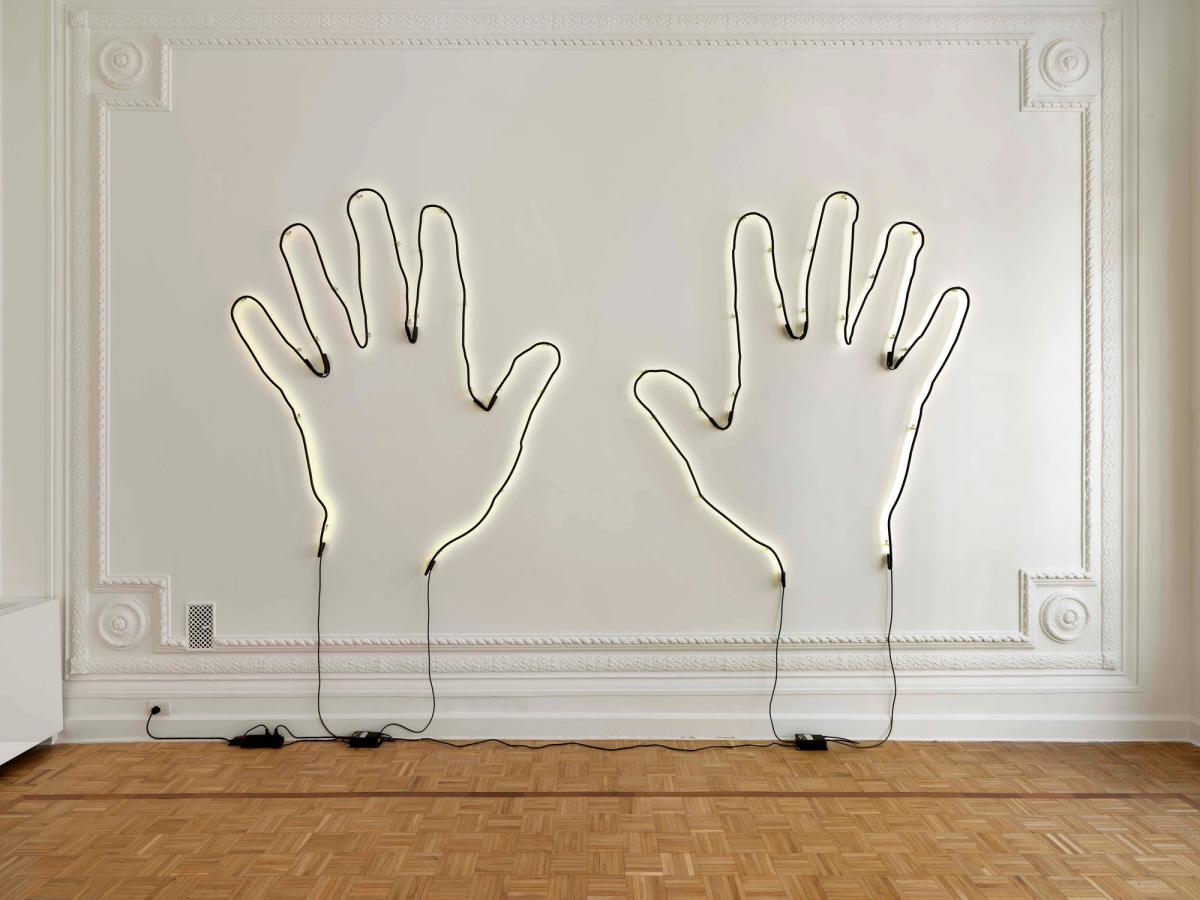Glenn Ligon, one of the US’s most prominent and punchy artists, has taken his art in a new stylistic direction in his first solo show in Italy. The artist—who is best known for his text-based paintings that he began making in the 1980s—says his new silkscreen and ink marker paintings take text “to a new level of abstraction”. The exhibition In poetry, a solution to everything (until 28 July), at Thomas Dane Gallery in Naples, also reflects the Bronx-born artist’s ongoing political concerns through two new neon sculptures that explore the issue of immigration in the Neapolitan context.
The artist often uses appropriated texts from writers such as Walt Whitman, Gertrude Stein and James Baldwin for his text works. For Comrades and Lovers—a 400-foot neon installation at the New School university in New York in 2015—Ligon drew on Whitman’s poetry collection Leaves of Grass (1855). Two paintings on show in Naples from Ligon’s Stranger series (begun in 1996), made using oil-stick and coal dust, incorporate text from Baldwin’s 1953 essay Stranger in the Village.
But most of the works in Naples do not start with text but single letters. “I usually make paintings by starting with a specific text. But this is a departure,” says Ligon. “I started these works by drawing through letter stencils, then turning those drawings into etchings. The etchings are then turned into screenprints, some of which have white backgrounds, some have black drawn on them.”

Installation view of Glenn Ligon's show at Thomas Dane Gallery in Naples Thomas Dane Gallery
In the Naples show, Ligon—who has explored the history of slavery (Runaways, 1993) and the civil rights movement (Condition Report, 2000) in the past—touches upon immigration and the plight of displaced individuals with the work Notes for a Poem on the Third World, a large-scale piece depicting the artist’s hands in black-painted neon. The title comes from a film project by the Italian director Pier Paolo Pasolini that was never realised; he hoped to shoot the work in India, Africa and “the black ghettoes of the United States” but was murdered in 1975.
“Pasolini is a fascinating figure and I wanted to do some work in homage to him. I planned to make a series of neon [works] based on tracings of my hands in different positions, of which the one in the exhibition is the first of five [chapters] to be rolled out. This has a relationship to Pasolini and his notion of ‘the discovery of the elsewhere’, a ‘reaching out’ to the other. This neon of two hands viewed in a US context echoes the sea or raised hands in Black Lives Matters protests [in the US],” Ligon says.
Another neon work consists of blue letters spelling out the words Siete Ospiti (You Are Guests), which was emblazoned across a banner at a football match between Naples and Bologna. These works take on a special significance in the southern Italian city, which has received waves of immigrants. “It is interesting to show works in Naples, which has a particular history and a particular kind of density. I want to see how work translates in a different context,” Ligon tells The Art Newspaper.
And what does the artist make of the current state of the US? “It is good to get a break from the urgency and immediacy of the US political situation and think about other cultures. The US is not the world! And we do have a particularly crazy president for the moment,” he says.


